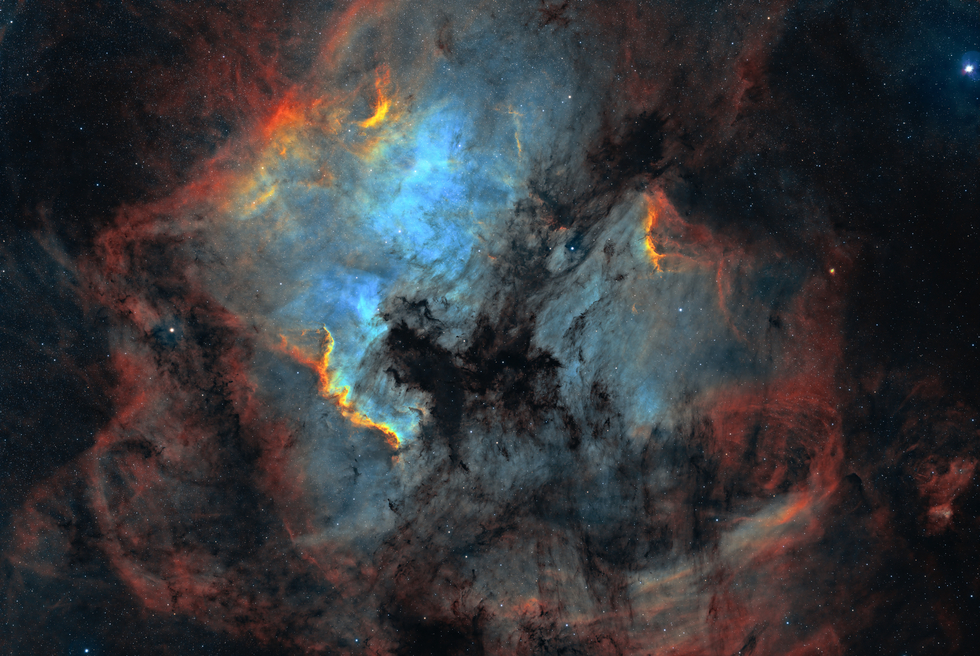NGC 7000
NGC 7000
The North American Nebula and Pelican Nebula are located in the constellation Cygnus near the star Deneb. The area imaged has a width of 10 lunar diameters, so that is a wide field of view. The distance of this nebula complex is estimated at 2590 light years (Gaia satellite observations)
Both the North America nebula and the Pelican nebula are separated by the large dark dust cloud L935. For a long time, astronomers have been looking for the star that is causing the gas clouds to ionize. Edwin Hubble suggested in 1923 that Deneb might be the cause. But Deneb's surface temperature is only 8500K and spectroscopic studies suggest that the ionizing star should have at least a surface temperature of 30000K. Deneb is also too far from the center of this region. It was clear that the star might be centrally located behind the dark L935 cloud.Finally, the sought-after star was found by Anna Pasquali and Fernando Coméron using the 2.2m telescope at Calar Alto Observatory in Spain. It is J205551.3+435225, an O3.5 star with magnitude 13.2. This star's light is dimmed 10000 times by the dark dust cloud. Unobstructed, it would be a star of about magnitude 3.5. Remarkable that a seemingly insignificant little star is what causes the entire nebula complex to light up in this wide-angle image!
Processing: Alexander Reinartz
Text: Chris De Pauw
Both the North America nebula and the Pelican nebula are separated by the large dark dust cloud L935. For a long time, astronomers have been looking for the star that is causing the gas clouds to ionize. Edwin Hubble suggested in 1923 that Deneb might be the cause. But Deneb's surface temperature is only 8500K and spectroscopic studies suggest that the ionizing star should have at least a surface temperature of 30000K. Deneb is also too far from the center of this region. It was clear that the star might be centrally located behind the dark L935 cloud.Finally, the sought-after star was found by Anna Pasquali and Fernando Coméron using the 2.2m telescope at Calar Alto Observatory in Spain. It is J205551.3+435225, an O3.5 star with magnitude 13.2. This star's light is dimmed 10000 times by the dark dust cloud. Unobstructed, it would be a star of about magnitude 3.5. Remarkable that a seemingly insignificant little star is what causes the entire nebula complex to light up in this wide-angle image!
Processing: Alexander Reinartz
Text: Chris De Pauw
SPECIFICATIONS
Telescope
Takahashi FSQ-106EDX4
Camera
QHY 600M Pro
Location
Almería, Spain
Date of observation
May, June, October and November 2023
Filters
Astrodon SHO
Processing
Pixinsight, GIMP
Credits
Alexander Reinartz



